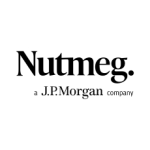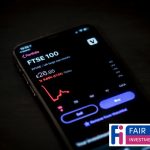Investment Focus: Mariana 10:10 Twin Option FTSE Kick Out Plan
Potential 10% each year for up to 10 years
Depending on which of the two investment options is selected, this new launch from Mariana offers investors the potential for either 10.0% or 12.5% per year, both dependent on the performance of the FTSE 100 Index. In addition, the plan offers the ability to mature early or ‘kick out’ each year from the end of year three onwards and is the first plan of its kind to extend the maximum term to 10 years, hence the plan name. With the potential for such high headline returns from a plan based on the FTSE only, we take a closer look at how this new investment plan works in order to better understand the risk versus reward.
New launch
Fixed term investment plans that have the ability to mature early each year are commonly known as ‘kick out’ plans. These plans are popular with investors in all market conditions but seem to gain increased interest when the stock market is at historically high levels since they are often structured in a way that can produce investment level returns even if the market stays relatively flat – and this is exactly what the latest launch offers investors.
Plan snapshot
The 10:10 Twin Option FTSE Kick Out Plan offers the potential for double digit growth on your capital depending on the performance of the FTSE 100 Index. Investors have two options, the difference between them being the level the Index has to reach in order for the plan to make a growth payment along with a return of your original investment.
For those targeting the higher return of 12.5% each year (not compounded), the FTSE must end the year 10% or more higher than its value at the start of the investment whilst the required level of the Index reduces to the same or higher for the lower headline return of 10.0%. If the plan does not kick out at all, the return of your initial capital is also dependent on the FSE 100 Index with your capital put at risk if the Index at the end of the investment term is more than 30% lower than its value at the start of the plan, in which case your capital will be reduced by 1% for each 1% fall.
The potential for high returns
In addition to the opportunity for early maturity it is no doubt the potential for double digit returns that will add to this plan’s popularity, especially since despite its recent falls, the FTSE still remains at what are historically high levels. The return is not compounded, but will be paid to you for each year the investment has been in place, thereby offering compelling returns, and if the Index stays relatively flat or only rises by a small amount, offers the potential to beat the current stock market. If the plan does produce an investment return, your initial capital is also returned to you in full along with the growth payment.
‘Kick out’
The term ‘kick out’ refers to the ability of the investment plan to mature early depending on the movement of the FTSE 100 Index. The 10:10 Twin Option FTSE Kick Out Plan has the potential to mature at the end of each year from year three onwards, provided the value of the Index meet one of the required levels, depending on which option you invest in.
FTSE 100 Index
Plans linked to the FTSE 100 Index provide a potential return against what is widely recognised as the proxy benchmark for most investors and investment managers. Since the historical volatility is familiar to many investors, they are in a better position to consider the pros and cons of the plan within the context of the underlying investment. Plans which offer double digit returns are often linked to the performance of a small number of shares listed on the FTSE rather than the broader exposure to the UK stock market offered by the Index.
Dual Option
The required level the FTSE 100 Index has to meet in order to provide an investment return depends on which option is selected. Investment option two which offers the higher headline return of 12.5% growth each year (not compounded), requires the level of the Index to be at least 10% higher than its level at the start of the plan. Investment option one offers a potential 10.0% a year (not compounded) with the required level simply being the same or higher than its level at the start of the plan – this means the Index can remain flat and you would still receive double digit returns… Investors can also split their investment between the two options provided the total invested meets the minimum £5,000.
Investment term – breaking new ground…
The plan has broken new ground in that the maximum term is set at 10 years rather than the more common five or six years of most structured investment plans. This could be seen as an advantage over the shorter terms for those investors who would prefer to stay invested should we experience a market downturn in anticipation of markets recovering with the potential for a double digit return to compensate.
Although the plan can be encashed prior to the end of the term, the proceeds you receive will depend on a number of market factors and could mean that you may receive less than your initial investment. Since the investment is designed to be held for the full term it should only be considered by those who are able to invest their capital for ten years.
Some capital protection from a falling market
Should the plan provide a growth payment then this is made along with a full return of your initial investment. However, if the plan runs the full 10 years and fails to provide any growth, the return of your initial capital is conditional on the FTSE 100 Index not falling by more than 30% of its value at the start of the investment. This is known as conditional capital protection and with this plan is measured at the end of the investment term only. Provided the Index has not fallen below this level, you will receive a return of your initial capital but if it has, your initial investment will be reduced by 1% for every 1% fall in the FTSE, so you could lose some or all of your capital. In this situation you would lose at least 30% of your initial capital.
Back testing: how the plan would have performed historically
Back testing is statistical research which uses hypothetical products with identical terms to this investment plan and considers how they would have performed over a 15 year period had they been launched since August 1994, giving a total of 3,781 different hypothetical products. This analysis shows that for investment option one a kick out did not occur 4.49% of the time and that at least 30% of the initial investment was lost in 0.56% of occasions. For investment option two, a kick out did not occur in 13.94% of cases and at least 30% of the initial investment was lost in 2.88% of cases.
Please note that this analysis is simulated and has no bearing on how this plan will perform in the future, actual performance may produce significantly different results. It is not a reliable indicator of future performance and should not be used to assess the risks associated with the plan.
Societe Generale as counterparty
Unlike an investment fund, this plan uses your investment to purchase securities issued by Societe Generale and so their ability to be able to meet their financial obligations become an important consideration. This is known as counterparty risk (or credit risk) and means that in the event of Societe Generale going into liquidation, you could lose some or all of your initial investment as well as the payment of any growth return. In this event you would not be entitled, for this reason alone, to compensation from the Financial Services Compensation Scheme (the ‘FSCS’).
Credit ratings and agencies
One accepted method of determining the credit worthiness of a counterparty is to look at credit ratings issued and regularly reviewed by independent companies known as ratings agencies. Standard and Poor’s is a leading credit ratings agency and as at 25th August 2015, Societe Generale has been attributed an ‘A‘ rating with a negative outlook. The ‘A’ rating denotes a strong capacity to meet its financial commitments but could be more susceptible to adverse economic conditions than companies in higher-rated categories. The negative outlook indicates that the rating may be lowered in the short to medium term (between 6 months to 2 years).
Defined risk and defined returns
One of the features of this investment is that the potential returns are stated up front, prior to investing. This allows the investor to consider the potential upside in the context of the amount of risk they are taking since you know at the outset exactly what needs to happen in order to receive the returns as well as a return of your initial investment.
ISA friendly
We expect this investment to be popular with both non-ISA and ISA investors. The plan is available as a New ISA up to the current limit of £15,240, and also accepts transfers from both Cash ISAs and Stocks & Shares ISAs. The minimum investment is £5,000 which can be split across the two investment options.
Fair Investment conclusion
Oliver Roylance-Smith, head of savings and investments at Fair Investment Company, commented on the plan: “The headline returns on offer from this plan are some of the highest currently available from a kick out investment linked to the performance of the FTSE 100 Index. With the FTSE recently closing below 6,000 for the first time since 2012, investors may see this as a good time to invest in a plan that offers high growth returns even if the market stays flat, whilst the extension to a 10 year maximum term may offer some reassurance to investors who consider a market downturn could affect the return on their investment.”
Past performance of the FSTE 100 Index is not a guide to its future performance.
The plan is open now for new ISA investments (maximum £15,240), ISA transfers and non-ISA investments.
Click here for more information about the Mariana 10:10 Twin Option FTSE Kick Out Plan »
No news, feature article or comment should be seen as a personal recommendation to invest. Prior to making any decision to invest, you should ensure that you are familiar with the risks associated with a particular investment. If you are at all unsure of the suitability of a particular investment, both in respect of its objectives and its risk profile, you should seek professional advice. Tax treatment depends on your individual circumstances and may change. ISA transfer charges may apply, please check with provider.
This is a structured investment plan that is not capital protected and is not covered by the Financial Services Compensation Scheme (FSCS) for default alone. Returns are not guaranteed and there is a risk of losing some or all of your initial investment due to the performance of the FTSE 100 Index. There is a risk that the company backing the plan or any company associated with the plan may be unable to repay your initial investment and any returns stated. In addition, you may not get back the full amount of your initial investment if the plan is not held for the full term. The past performance of the FTSE 100 Index is not a guide to its future performance.
Tags





